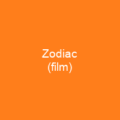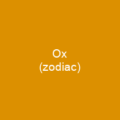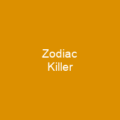The Enigma of the Chinese Zodiac
Imagine a world where your personality is not just defined by your birth month or day but by an animal that represents you in a 12-year cycle. This is the fascinating realm of the Chinese zodiac. It’s more than just a calendar; it’s a profound reflection of Chinese philosophy and culture, woven into the fabric of daily life for centuries.
The Birth of an Ancient Tradition
How did this tradition come to be? According to legend, the Jade Emperor held a grand race to determine which animals would grace his calendar. The rat, with its cunning and quick thinking, managed to win by riding on the ox’s back and jumping off just before the finish line. But historical records suggest that the Chinese zodiac appeared after the establishment of the ‘Ganji Chronicle Law,’ adding layers of mystery to its origins.
Symbolism and Structure
The 12 animals were chosen for their symbolic traits, reflecting revered status in traditional Chinese culture. Each animal is paired with a Heavenly Stem and an Earthly Branch, creating a complex system that spans over 60 years. This intricate structure not only influences personality but also events in one’s life, compatibility, marriages, and fortunes.
Confucian Influences
The belief that everyone and every animal has a role to play in society aligns with Confucian beliefs in a hierarchical society. The zodiac is used to ascribe self-presentation or perception by others, making it an essential part of Chinese culture for centuries.
Global Influence
The influence of the Chinese zodiac extends far beyond China’s borders. It has been adopted and adapted in East Asian and Southeast Asian countries like Japan, South Korea, Vietnam, Singapore, Nepal, Bhutan, Cambodia, and Thailand. Each country has its unique variations, adding a rich tapestry to this ancient tradition.
Trines and Elements
The Chinese zodiac’s animal trines are deeply connected with ancient Chinese cosmology, reflecting the Five Elements (Wood, Fire, Earth, Metal, Water) and the natural order. The first Trine consists of the Rat, Dragon, and Monkey; these signs are considered intense and powerful individuals capable of great good.
Mythical Origins
The story of ‘The Great Race’ explains how animals were chosen based on their characteristics. The ox was named first due to its kindness and naivety, while the rat’s quick thinking allowed it to reach the Jade Emperor first. These tales not only entertain but also impart valuable life lessons.
Regional Variations
The inclusion of animals in the zodiac varies among cultures. In Korean and Japanese zodiacs, the Sheep replaces the Goat, while in Vietnamese, the Water Buffalo replaces the Ox. The Cambodian zodiac is identical to the Chinese zodiac with some variations, such as replacing the Monkey with a turtle or the Dragon with a nāga.
Modern Adaptations
The Chinese zodiac has found its way into commercial culture, inspiring crafts, toys, books, accessories, and paintings. It is widely used in Asian countries influenced by China, making it an integral part of modern life.

The Chinese zodiac is a timeless tradition that continues to captivate and intrigue people around the world. From its ancient origins to modern adaptations, it remains a fascinating blend of mythology, philosophy, and cultural heritage.
You want to know more about Chinese zodiac?
This page is based on the article Chinese zodiac published in Wikipedia (retrieved on January 29, 2025) and was automatically summarized using artificial intelligence.







